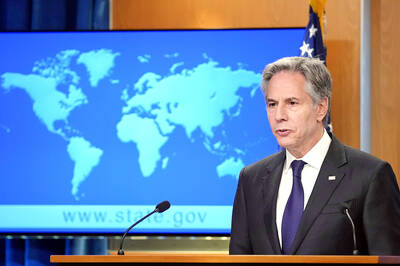Mali’s first president, Modibo Keita, roused citizens to push the nation forward when he took office in 1960, after decades of French rule, and precipitated a time that many remember as one of hope.
However, 60 years on, the optimism of the post-independence era has given way to chronic instability in Mali, which is plagued by corruption, poverty and militancy.
Keita’s remaining family members, who are nostalgic for his time in office, assiduously keep the ex-president’s memory alive.
“He is the father of independence, he is the national father, he is the father of all Malians,” said the former president’s daughter, Hatouma Keita, from the family home in the capital Bamako.
After he came to power on Sept. 22, 1960, Modibo Keita made his mark by pursuing socialist policies and large development projects.
“Tomatoes, soldiers’ boots, milk, matches, textiles, everything used to be made here,” said Maimouna Diakite, Modibo Keita’s adopted daughter.
However, Modibo Keita’s government was not devoid of criticism at the time and his economic policies provoked a strong backlash.
He was ousted in 1968 by Moussa Traore, a young army lieutenant, and died in detention in 1977.
Traore — who himself died last week, aged 83 — went on to rule Mali with an iron fist for 22 years, a time during which few mentioned Keita, Diakite said, and many in the former president’s family fled.
Modibo Keita’s memory began to creep back into the public consciousness after the military toppled Traore in 1991.
A memorial was constructed in his honor, and an airport and stadium named after him.
However, Mali is less hopeful today than when Modibo Keita took office 60 years ago.
On Aug. 18, a clutch of young officers overthrew Malian president Ibrahim Boubacar Keita in a military coup, after months of protests against him in the country.
“All Malians must consider themselves as mobilized for the construction of the republic of Mali, homeland of all those who are firmly committed to the achievement of independence and African unity,” Modibo Keita said when he was president.
For his adopted daughter Diakite, the achievement of that ambition lies in doubt.
“Are we even independent today?” she asked.

‘IN A DIFFERENT PLACE’: The envoy first visited Shanghai, where he attended a Chinese basketball playoff match, and is to meet top officials in Beijing tomorrow US Secretary of State Antony Blinken yesterday arrived in China on his second visit in a year as the US ramps up pressure on its rival over its support for Russia while also seeking to manage tensions with Beijing. The US diplomat tomorrow is to meet China’s top brass in Beijing, where he is also expected to plead for restraint as Taiwan inaugurates president-elect William Lai (賴清德), and to raise US concerns on Chinese trade practices. However, Blinken is also seeking to stabilize ties, with tensions between the world’s two largest economies easing since his previous visit in June last year. At the
Nearly half of China’s major cities are suffering “moderate to severe” levels of subsidence, putting millions of people at risk of flooding, especially as sea levels rise, according to a study of nationwide satellite data released yesterday. The authors of the paper, published by the journal Science, found that 45 percent of China’s urban land was sinking faster than 3mm per year, with 16 percent at more than 10mm per year, driven not only by declining water tables, but also the sheer weight of the built environment. With China’s urban population already in excess of 900 million people, “even a small portion

UNSETTLING IMAGES: The scene took place in front of TV crews covering the Trump trial, with a CNN anchor calling it an ‘emotional and unbelievably disturbing moment’ A man who doused himself in an accelerant and set himself on fire outside the courthouse where former US president Donald Trump is on trial has died, police said yesterday. The New York City Police Department (NYPD) said the man was declared dead by staff at an area hospital. The man was in Collect Pond Park at about 1:30pm on Friday when he took out pamphlets espousing conspiracy theories, tossed them around, then doused himself in an accelerant and set himself on fire, officials and witnesses said. A large number of police officers were nearby when it happened. Some officers and bystanders rushed

Beijing is continuing to commit genocide and crimes against humanity against Uyghurs and other Muslim minorities in its western Xinjiang province, U.S. Secretary of State Antony Blinken said in a report published on Monday, ahead of his planned visit to China this week. The State Department’s annual human rights report, which documents abuses recorded all over the world during the previous calendar year, repeated language from previous years on the treatment of Muslims in Xinjiang, but the publication raises the issue ahead of delicate talks, including on the war in Ukraine and global trade, between the top U.S. diplomat and Chinese